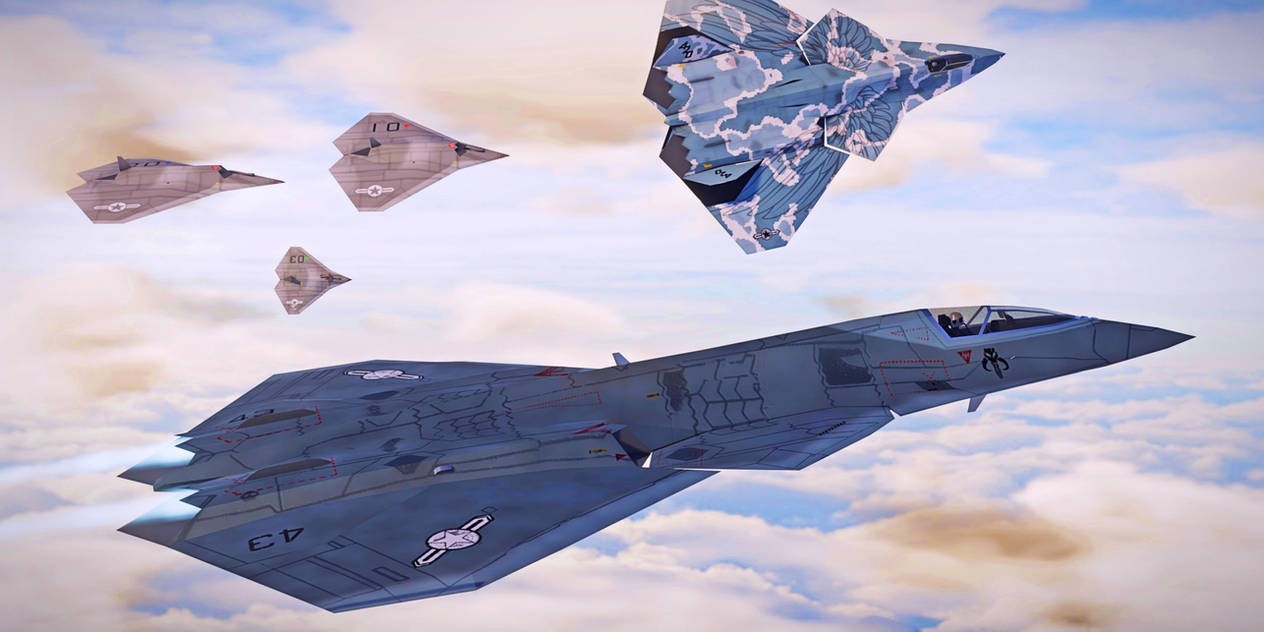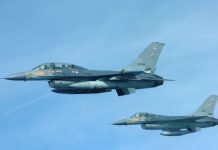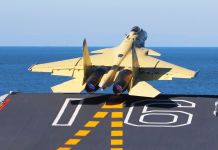Once again, a very interesting image that points towards China developing a fixed-wing, sixth-generation fighter jet has gone viral on social media.
Earlier this week, a mysterious stealth fighter was spotted on the computer screen at the Aviation Industry Corporation of China (AVIC). The photo was taken by an anonymous user and initially posted to the Chinese micro-blogging website Weibo with little to no additional details.
From the look, the fighter-sized aircraft concept appears to be a tailless, twin-engine, flying wing design similar to the sixth-generation fighter concepts like the American NGAD or the British Tempest sixth-generation fighter jet.
Even though the photo’s veracity could not be independently established, it is in line with the assumption and the evidence that suggests China is indeed focusing on a tailless configuration for its sixth-generation fighter jet.
As seen below, the photo shows several executives in suits gathered around what appears to be a reasonably simple flight simulator setup with a throttle and side-stick controller, a sizable computer screen that appears to display a more realistic computer-generated cockpit, and a head-up display.

The three larger displays above this imaginary cockpit are also noteworthy. A tailless aircraft is depicted on the center screen. However, the screen’s low resolution makes it unclear whether this image is computer-generated or represents an actual flight vehicle.
Military experts have stated that China is notorious for leaking visuals related to the systems it works on. For instance, in August 2022, two distinctive images of PLA’s next-generation bomber, dubbed the H-20, went viral on social media.
The photos generated widespread interest among PLA watchers but were never officially claimed by the PLA.
Further, a concept for a stealthy tailless sixth-generation combat aircraft was reportedly seen at the Zhuhai Air Show 2022. In the last two years, there have been several instances where visual evidence has suggested that China is working on a fixed-wing six-gen aircraft on a war footing.
Overall it fits nicely to what we know and expect, China's 6th generation fighter will be most likely be a tailless flying wing design like several other 6th gen fighter concepts under study in other countries too. pic.twitter.com/v7OaNAKoyU
— @Rupprecht_A (@RupprechtDeino) October 31, 2021
It has been widely discussed that the low observability of broadband against numerous radar types operating across frequencies is considerably improved by the tailless design. It lessens the radar signal of the aircraft beyond the head-on perspective.
It also provides better efficiency due to decreased drag for continuous flight at high speeds. This design has drawbacks, but every sixth-generation aircraft is designed as a tailless jet.
Chinese academic papers have also mentioned tailless fighter ideas, indicating that this configuration is already approved and backed by Chinese scientists and engineers. Further, artworks depicting concepts for tailless combat aircraft have become more common in China, and photographs keep flooding social media now and then.
China’s Sixth-Generation Fighter Is In The Works
In October 2021, a mysterious tailless aircraft was spotted at the Chengdu Aircraft Corporation’s (CAC’s) factory airfield. At the time, the plane was believed to be a demonstrator or a mock-up of a manned sixth-generation fighter jet.
This airframe seemed appropriate for realizing an ‘exponential reduction in the signature.’ However, no official information was forthcoming from the AVIC or the CAC.
One of China’s two top fighter producers, CAC, produces the J-10 single-engine fighter and the J-20 stealth aircraft. It has long been considered a strong contender to develop a sixth-generation fighter for china.
Further, the chief designer for CAC, Wang Haifeng, said in 2019 that the sixth-gen fighter could be inducted by 2035. If this is indeed the plan, testing will start at least by the end of this decade.
Although Wang did not elaborate on China’s design, he did mention several features that he thought would distinguish its fighter capacity in the future, including the ability to work with drones, the use of artificial intelligence, advancements in stealth, and omnidirectional sensors. He added that designs might use “less certain” disruptive technology like drone swarms, lasers, and adaptive engines.

According to US Air Force Secretary Frank Kendall, the US Air Force is currently on target to field its Next Generation Air Dominance family of systems by the decade’s end, becoming the first six-gen fighter user. On its part, the United States has expressed fears that China could field one of its own sooner than anticipated.
In September 2022, ACC commander Gen. Mark Kelly said, “I cannot tell you today what’s going on in China except they’re planning for their 20th National Party Congress [in October]. But I can tell you what’s not happening. They’re not having a debate over the relevance of six-gen air dominance. And I can also tell you they’re on track.”
Kelly went so far as to say that China’s conception of a sixth-generation fighter seems to mirror the United States’ own. “By and large, they see it greatly the way we see it in terms of an exponential reduction in signature and exponential acceleration in processing power and sensing, and the ability to iterate in terms of open mission systems, to be able to reprogram at the speed of relevance essentially,” Kelly said. “The differences, I think, are a nuance.”
While the NGAD and other sixth-generation fighter programs remain cloaked in secrecy, China has gone a step further to keep its next-gen aircraft completely hidden from the public eye.
However, the artwork and concept rendering surfacing now and then is evidence that work may be proceeding on a war footing, and China’s sixth-gen aircraft could start testing soon.
- Contact the author at sakshi.tiwari9555 (at) gmail.com
- Follow EurAsian Times on Google News




